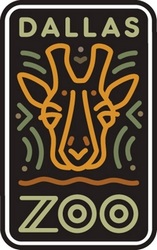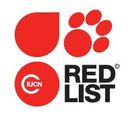ANIMALIA

Welcome to ANIMALIA the site of animal knowledge for both the professional and student. The information presented is taken from the authoritative sources: IUCN Redlist, ISIS, AZA TAGs and SSPs.There are three conservation listing used on this site. The International Union on Conservation, IUCN, puts out a Redlist evaluating the status of a species population. The Redlist is universally accepted as the definitive source of a species status. Please visit the link below to see the IUCN criteria for status assignment. The Convention of Trade in Endangered Species CITES is a treaty among the signatory countries regulating trade of endangered species. There are three appendices on which a species can be listed: I. II and III with Appendix I having the species that are most endagered and being the most restrictive. On this website the animals on Appendix I will have a blue banner as the background to the common name. Animals on appendix II will have a green banner and appendix III an orange one. The United States Fish and Wildlife( USFW) has a List of Endangered and Threatened Species. Plants and animals on this list are protected by federal law under the Endangered Species Act (ESA). On this website animals listed as Endangered have their common name on their fact sheet in red. Those species listed as Threatened have their common name in orange.
The Association of Zoo and Aquariums is the largest zoo association in North America. There are over 220 zoos and aquariums in Canada and the US. AZA manages the captive population of over 500 species through the Species Survival Program (SSP).The basis of these programs is maintaining a high genetic diversity through managed breeding. A species SSP is placed in one of three categories: Green, Yellow or Red , based on its genetic diversity. Green programs have the highest genetic diversity while Red has either low genetic diversity or has no studbook. On this website species that are in an AZA SSP will have the sidebar the same color as its corresponding SSP category: green, yellow or red. Sidebars of any other color mean the species is not placed in an SSP. If you have any questions about this website or looking for information not found here please e-mail me the link is at the top right of every page and at the bottom of the menu if using a mobile device.
The Association of Zoo and Aquariums is the largest zoo association in North America. There are over 220 zoos and aquariums in Canada and the US. AZA manages the captive population of over 500 species through the Species Survival Program (SSP).The basis of these programs is maintaining a high genetic diversity through managed breeding. A species SSP is placed in one of three categories: Green, Yellow or Red , based on its genetic diversity. Green programs have the highest genetic diversity while Red has either low genetic diversity or has no studbook. On this website species that are in an AZA SSP will have the sidebar the same color as its corresponding SSP category: green, yellow or red. Sidebars of any other color mean the species is not placed in an SSP. If you have any questions about this website or looking for information not found here please e-mail me the link is at the top right of every page and at the bottom of the menu if using a mobile device.
The following zoos neither paid for advertisement nor are involved in the operating of this website. Many of the photographs and videos were shot at these facilities. Please click on the links below to connect to their websites. I encourage all the visitors to this site to support these institutions.






